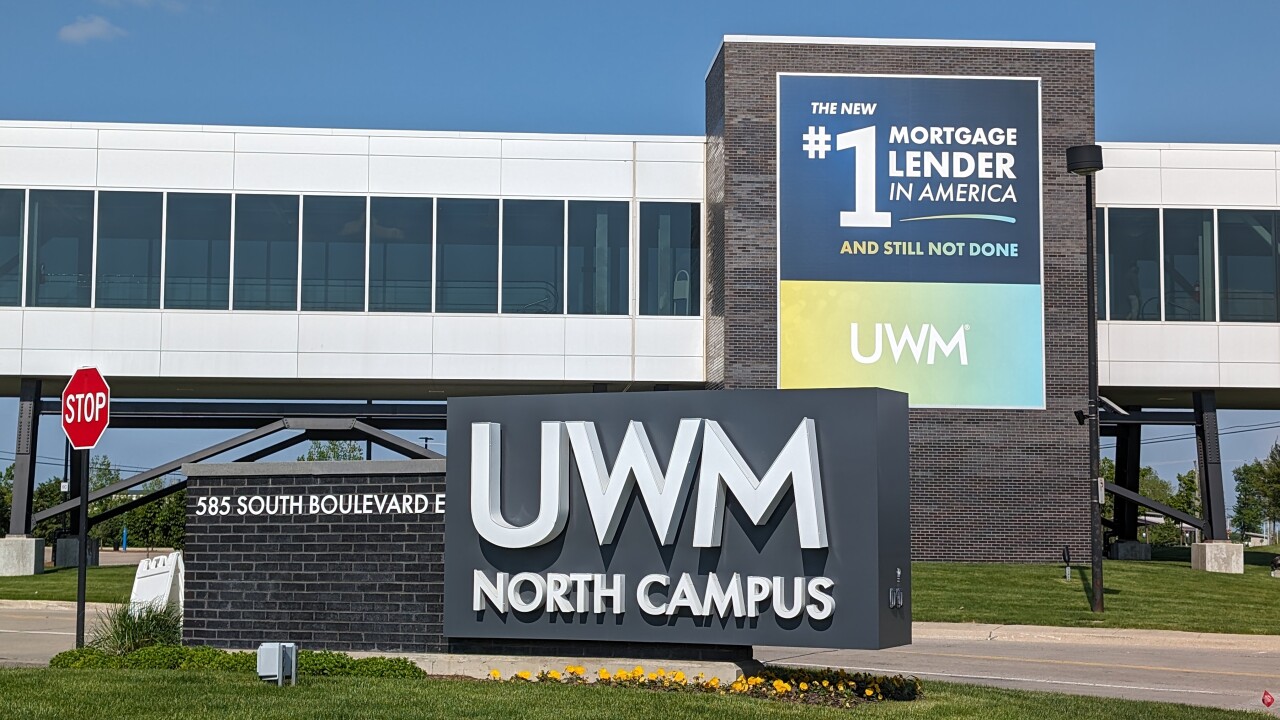
A new Department of Housing and Urban Development rule could result in fewer and smaller reverse mortgages being made in the short term. Lenders nevertheless welcomed the change, saying greater regulatory clarity boosts the product's long-term prospects.
Under
The change could reduce the number of transactions with an otherwise eligible non-borrowing spouse, since the borrowers in such deals typically elected to take a younger spouse off to get more cash. (Reverse mortgages are underwritten actuarially; the longer borrowers are expected to live, the less money can be lent against the home.) Loan officers sometimes suggested it to drive up their commissions.
The loss of such business will be offset over time by less tangible benefits to the industry's image, reverse mortgage professionals say.
"The motivation of removing a younger spouse to get more money is gone. With that motivation gone, you're not going to have the horror story of the widow getting foreclosed on and getting kicked out of her home of 40 years," says Rob Katz, executive vice president of sales at ReverseVision, a technology firm based in Seattle. "The reputational risk for lenders, that goes away."
The reduction in possible proceeds to the borrower is "an appropriate way for HUD to balance the risk out," says Dennis Loxton, a regional vice president for First Financial Reverse Mortgages, a division of Success Mortgage Partners, Ann Arbor, Mich.
And for originators, "it improves our ability to do business because it takes away one more piece of regulatory uncertainty and it replaces it with a rule that quite frankly in my opinion is very balanced," Loxton says. "So it actually makes it easier for us to deliver these loans in the future." Most of what First Financial originates ends up in securitizations; the company does not service the loans.
It might be difficult for reverse mortgage lenders to
HUD is working on new actuarial tables and it is not likely those will be available before then, says Steve Irwin, executive vice president of the National Reverse Mortgage Lenders Association.
So in the short term, it might be a little more difficult to originate HECMs, Loxton says, though he agrees that in the long term this change should help to improve the future of the program.
There is a fair amount of due diligence involved with Home Equity Conversion Mortgages (the name for reverse mortgages insured by HUD, which account for most of the market) where there is a non-borrowing spouse. For example, some secondary market loan purchasers require both spouses to meet with an attorney. That will not change in the short run, Loxton says.
However, because other changes to the HECM program
A lot of Loxton's business comes from seniors who need the cash the reverse mortgage provides. The changes HUD is making to the program could push "the next wave of growth" for reverse mortgages, a product which has yet to see the market share growth its supporters have longed for.
Loxton feels the buzz the product had in 2004 and 2005 is returning. Consumer and referral partner inquiries about reverse mortgages are starting to pick up and by 2015 there should be an improved market for this product "because there is a ground-swell of people who need this," Loxton says.
"Any time that you remove that little bit of uncertainty and that little bit of stigma surrounding the product, on balance it is very positive for the business," he declares.
Katz agrees that this change could help push reverse lending to the next level. While there might be "an incremental decrease in the number of loans that are done for a while, in the big picture I am thrilled," he says.
Related:





